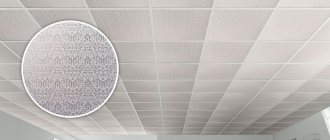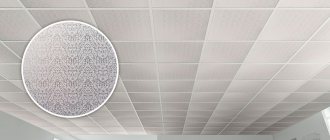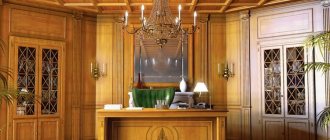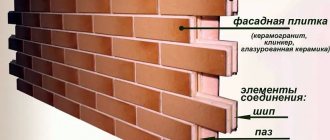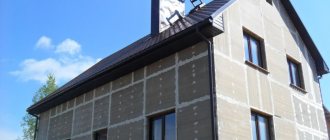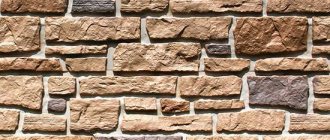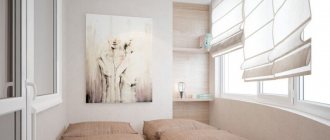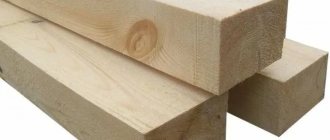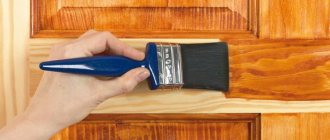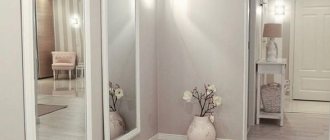Currently, there are many finishing materials that are very similar to natural materials. Wall decoration with wood-look panels is especially popular. Wood-look wall panels allow you to bring comfort and coziness to your interior. This type of finishing is perfect not only for residential interiors, but also for offices, shopping centers, fitness clubs, schools and preschool educational institutions.
- Oak
- Nut
- Ash
- Eben
To catalog
Panel sizes and types of coatings
Wood-effect panels for interior decoration differ in many ways - color, surface texture, choice of wood type, size. Each manufacturer has a standard set of panel sizes, which is systematically produced in production. They depend on the size of the GSP slab from which a certain number of panels are produced in order to reduce the number of scraps and reduce the cost of the process. “Many manufacturers do not undertake the production of panels according to the dimensions and design of the customer. At the Wallhof factory we produce wall and ceiling panels of any size, shape and complexity. We implement even the most daring architectural projects.”
It is worth highlighting the technology for creating a “wood-like” surface:
- Veneering. The GSP base is covered with veneer. Veneer is the thinnest cut of wood. In nature, there are no two identical trees, so when decorating a room with veneer panels, the overall design in the interior will be different, but at the same time retain its natural exclusivity.
- Finished with FineLine veneer. This is also natural wood, but this type of veneer is made from fast-growing wood and painted in the color of any type of wood chosen by the customer. When finishing, the interior turns out to be homogeneous, because... the texture of the desired rock is the same on each panel.
Features of wood panels
Facade slabs imitating wood are advantageous in that their main advantage over natural materials is moisture resistance.
Despite the fact that natural wood for outdoor use is treated with special moisture-protective and antiseptic agents, the material is short-lived due to its organic structure, and it can also attract insects and bugs.
Wood cladding imitates natural material so faithfully that only upon close examination is it possible to tell the difference. The cladding can be similar to an oak board, spruce, or pine log.
Different colors and textures of panels are characteristic of a certain type of wood. Basically, wood-look elements have a horizontal fastening, which more clearly corresponds to a laid board or rounded log. In addition, installation of the facing material is quite simple and does not require additional labor.
Installation technology
Walls are not always smooth; with regular wallpapering or painting, the walls are leveled. There are also some nuances in order to hide communications. Usually all the wires are hidden under the baseboard or under the cable duct. In the case of installing wall panels, everything is much simpler. The panels are mounted on an aluminum frame, there is no need to level the walls, and all wires and communications are hidden behind the panels. The wall panels are attached to each other with special profiles developed by Wallhof factory engineers. Therefore, any panel can simply be removed and installed back, if necessary. Wood-effect wall panels are an excellent solution for interiors of any style, from classic to modern. Wood evokes peace, a state of comfort and closeness with nature.
You can see all the information about panels and slats on our website or contact the managers, [email protected]
Methods of fastening wall panels
There are different ways to attach panels to walls. Some of them are suitable for almost all varieties. Namely:
- For adhesive composition - this method is suitable for light-weight panels and a more or less flat wall surface;
- Gluing to the sheathing - this method is rarely used and is suitable as a temporary measure (it is better to use more durable methods of fastening);
- Fastening with self-tapping screws - for this method, the sheathing is also mounted. The downside is that due to the natural expansion process of the material and the rigidity of the fastener, the panels may unexpectedly crack;
- Using clamps - such fasteners are first mounted on the sheathing using self-tapping screws or nails, and then the panels are secured to them. The connection is aesthetic and durable.
Pros and cons of design: wood texture on facades
What do we “read” from a surface decorated with wood?
A person receives 85% of information through vision and tactility;
We are also very much influenced by the feeling of the space - the style of the room instantly conveys to us a “package” of information that we may not be verbally aware of, but it will still determine our mood and state. So, what do we “learn” from a kitchen with wood-effect fronts? PROS:
- Wood = classic, natural, continuity.
The texture of wood refers us to nature and the classical canons of furniture making. After all, until the 50s, wood and wood veneer were irreplaceable materials - all furniture was made from them, including kitchens. That is, the texture of wood on the facades adds respectability and status to the interior. - Wood = attraction.
The texture of wood is complex, and the eye involuntarily catches it; we immediately pay attention to the pattern of the tree. Look at the photo below - visually we are focusing first on the countertop, backsplash and midline of the cabinets. The rest is perceived as a “frame” for the picture. - Wood = reliability.
Wood has been and remains the most reliable building material - and this psychologically works even if we are talking about MDF with a wood-like print. Especially if the tactile facade is not completely smooth - when touching such a surface, a person gets a feeling of confidence and reliability. And this is very important for psychological comfort. - Wood = practicality.
Matte wood-look facades are less likely to get dirty and fingerprints do not remain on them. The kitchen always looks neat
A word from the designer of the Kitchen
In the photo: mentally “paint” the top line of cabinets in a wood texture - the kitchen will immediately become more gloomy, cramped, and typical.
Why is this happening? We said above that the texture of wood is perceived by the brain as an accent. And if there is too much emphasis in the room, a visual overload is created, the room becomes psychologically smaller than it actually is, and the furniture begins to “crush.”
A word from the designer of the Kitchen
Detail:
If you are creating an interior in a strict classical or art deco style in an apartment located in the historical center of the city, a wooden kitchen is quite appropriate - but it should be furniture made of natural wood. MDF facades will not match the wood texture at the moment - there will be a feeling of inconsistency with the style, falseness.
MINUSES:
- Only wood-look MDF = visual overload and outdated style.
The kitchen will look smaller than it actually is, but in spirit it will resemble the kitchens of the 90s. The materials must be combined: 20-30% wood texture, the rest - white, black, gray, etc. facades and materials. - Lots of wood print = fake.
The combination of different textures looks organic in a city apartment. But excessive enthusiasm for facades with a wood texture will be a bad decision: after all, we are not talking about a natural material. And now the trend is calm naturalness and confidence.
A word from the designer of the Kitchen.
What size is your kitchen? The percentage of wood texture on the facades depends on this
In separate kitchens up to 7 square meters and in small studios
It is not recommended to actively use wood texture on facades. You can make the countertop and apron look like wood, and order the facades smooth, matte white/gray/black (or like stone). Small kitchens that have three rows of cabinets look good: the middle one is narrower than the top one. Here you can order it under the tree: you will get a cozy niche for cooking. See example with photo below:
In kitchens from 8 to 16 square meters
The texture of the wood looks quite harmonious even on all cabinets. If you adhere to the classic style, you can order facades with panels - but in this case it is better to choose light wood, for example, bleached oak, so as not to weigh down the space.
In kitchens and living rooms, we recommend not using wood-look facades.
In the kitchen-living room, everything is visible, and therefore the set should be made as less utilitarian in style as possible. It should look harmonious and status-worthy against the backdrop of the guest area - therefore, it is more logical to use matte or glossy white, milky, gray or black facades without handles here.
Checklist of rules for using wood texture on facades:
- Minimize the wood texture - it should be an accent, not a background. This is especially true for compact kitchens and kitchen areas in studios up to 30 sq.m.
- If you want to make the entire kitchen look like wood, choose light white or gray wood - this way the kitchen will look lighter, more modern and will not go out of style.
- It is better not to use wood texture in open kitchens and living rooms.
- Wood-effect facades look more modern if they are ordered without handles and open by pressing.
About façade finishing
Any owner is not indifferent to the appearance of his home. A stylish, neat façade is a subject of special concern. At the same time, facades made of different materials manifest their properties differently: if the brick finish gives the building features of monumentality and durability, then the trump cards of a wooden house are comfort and warmth. Wood also has other positive qualities (for example, it is environmentally friendly and easy to process); At the same time, wood finishing also has significant disadvantages:
- Low resistance to humidity . The main disadvantage of wooden finishing, dependence on the intensity of precipitation and temperature fluctuations, results in the appearance of mold, rotting and destruction. To protect the surface of the facade, it is necessary to carry out periodic treatment with impregnations and paints and varnishes.
- Fire hazard . It is almost impossible to increase the fire resistance of a wooden facade. Even careful and timely treatment with a fire retardant can only slow down the combustion process.
Combined facade finishing Source es.decorexpro.com
- Price . High-quality wood paneling made from valuable wood species can cost a decent amount of money (not counting the cost of subsequent maintenance).
If you still really want the house to have a pristine, natural look, facade panels made of other materials with an imitation of a wooden surface will come to the rescue. The construction market offers a significant selection of similar facade products, different in composition, structure and properties.
Main manufacturing companies
Manufacturers of hanging panels for exterior home decoration try to ensure that their products meet all standards for quality, environmental friendliness, and durability. It is based on quality indicators that companies gain popularity in the market.
The main manufacturers of panels are:
- Docke is a Russian company with German production technology and equipment;
- Neva-Steel is a St. Petersburg company. It is expanding quite quickly and has good ratings among competitors;
- Vox is a Belarusian manufacturer. Produces high-quality panels;
- Holzplast is a Russian-German company that has good quality materials and produces a line of wood-look materials;
- Alfa-Profile is a Russian manufacturer. Produces competitive materials.
Tile, facade and floor tiles
Ceramic floor tiles.
Ceramic materials in the form of tiles have been and remain in great demand.
This happens thanks to their high-quality technical characteristics.
- They have a high degree of wear resistance, are easy to maintain and very durable.
- The tiles are fired at a high temperature of 1100/1300°, this makes them very durable.
- Ceramic coating, thanks to the use of modern printing technologies, is a brilliant imitation of wood. At the same time, it significantly expands the possibilities of interior decoration. It is difficult to imagine natural wood as a covering in damp rooms. The instructions recommend tiles and porcelain tiles for installation in such rooms.
- Ceramic tiles can reflect the texture and color of any type of wood. At the same time, it can imitate all types of boards, regular, type-setting and artistic parquet.
Tips for choosing panels
- Light shades are best for children's rooms and bedrooms. The texture imitating light oak and ash looks good.
- Living rooms and offices are lined with dark colors. This creates an atmosphere of comfort and well-being.
- Textured elements are installed in the bathroom, which are combined with other materials.
Wood-effect wall panels are an excellent option for those people who prefer classics and natural motifs, but are not willing to overpay for the purchase of natural wooden products.
Similar articles
- Panels for wall finishing Types of materials for wall finishing. Standard types of wood or their processing products can be used as materials for wall finishing. Co...
- Do-it-yourself wall finishing with plastic panels: step-by-step instructions for PVC sheathing using profiles and cladding with glue
Plastic panels are an excellent material that is widely used to add various decor to the surface. Conveniently, this product can… - Do-it-yourself attic finishing (14 PHOTOS), interior wall decoration with wooden lining and plasterboard, options for separating the floor and ceiling of the attic floor
Beautiful and practical attic decoration can turn it into a cozy living room. This could be a bedroom, a study, a relaxation room with billiards,…
Video description
About the facade composite board in the following video:
Veneer cladding Source eternit.ru
Wood-polymer composite (WPC) panels
Production from WPC has become possible thanks to new technological developments. The structure (cellular structure) of the material reminds everyone of the familiar polycarbonate; it consists of crushed wood compressed with polymer resins. WPC siding for external wall decoration appeared relatively recently, but has already managed to displace wooden and metal counterparts due to its characteristics:
- Long service life . Products made from WPC retain their original appearance for a long time. Paint pigments are added to the mixture rather than applied to the surface, as a result the skin is not afraid of ultraviolet radiation.
- Appearance . WPC siding looks like natural wood; the facade of any house will look elegant and presentable.
- Saving settings . The panel finish has no external linear expansion, does not deform and is characterized by high mechanical and atmospheric resistance.
- Easy care . Special care (additional treatment with protective compounds) is not required.
Wood-polymer composite Source eternit.ru

